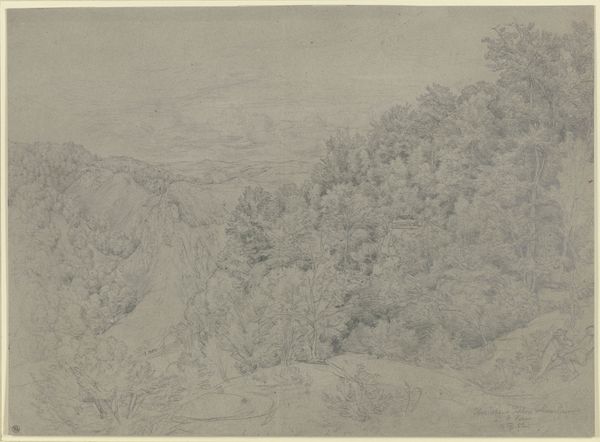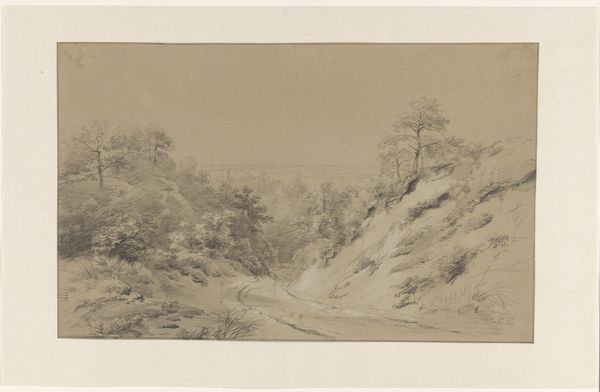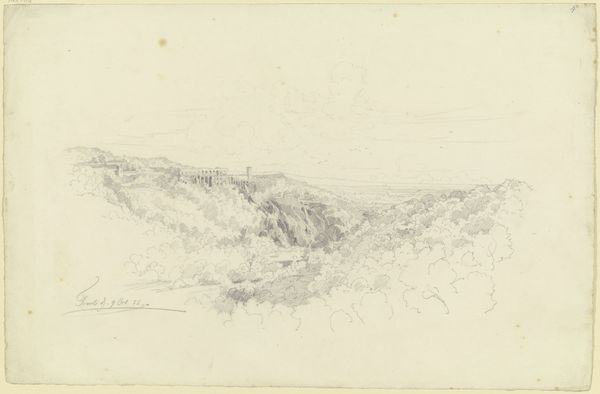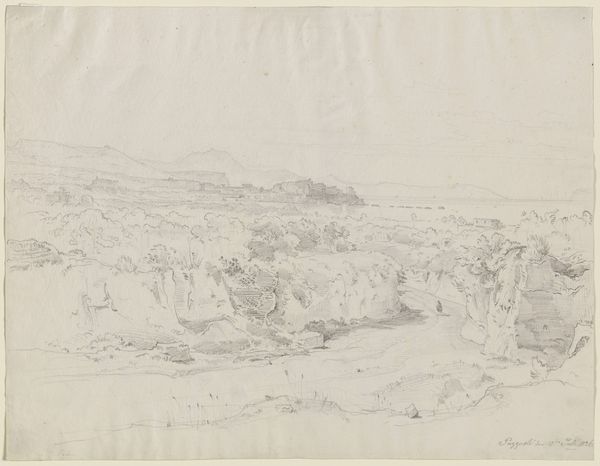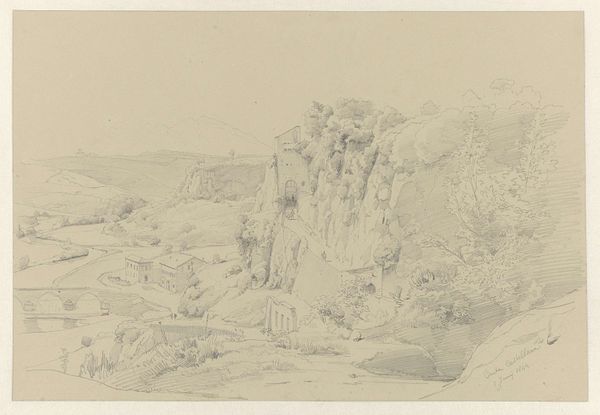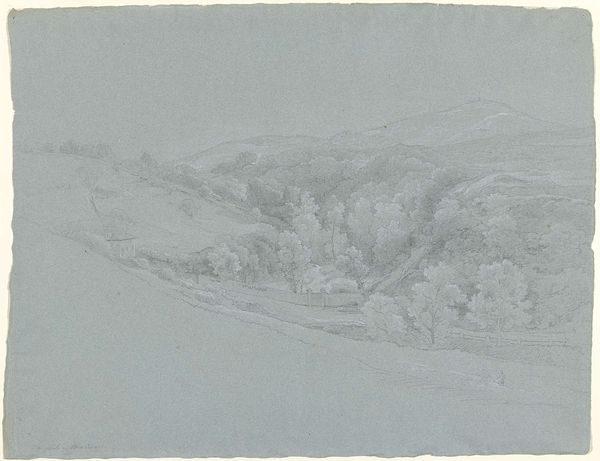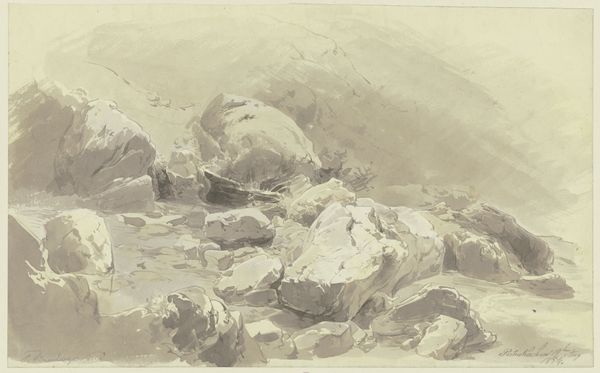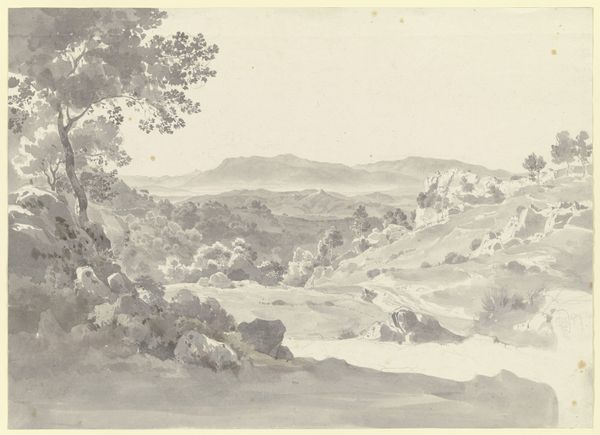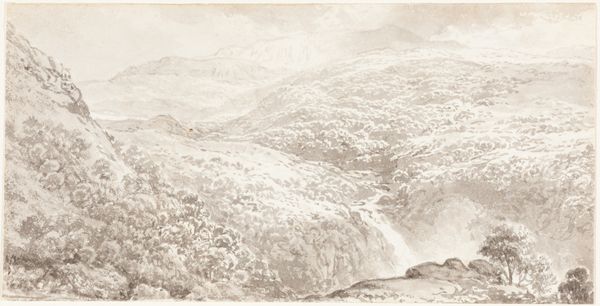
drawing, pencil
#
pencil drawn
#
drawing
#
landscape
#
etching
#
pencil
Copyright: Public Domain
Editor: This is Jacob Happ's "Valley Cut," a pencil drawing from 1906. It has such a serene and almost dreamy quality. The composition really draws you into the valley. What strikes you most about it? Curator: Primarily, the formal relationships. Note how the artist deploys hatching and cross-hatching to define form and volume. The directional lines aren't merely descriptive; they construct the spatial recession, leading the eye from the foreground's textured earth towards the implied light in the distance. Editor: So, it's more than just a picture of a valley? Curator: Indeed. Observe the balance between the dense, shaded areas and the lighter, open spaces. This juxtaposition creates a visual rhythm. Furthermore, consider the conscious decision to render certain elements—the foliage, for example—with a soft, diffused quality. What does that softness evoke for you? Editor: A sense of stillness? Or maybe a focus on light, rather than distinct details? It feels very subtle. Curator: Precisely. Happ prioritizes the interplay of light and shadow over precise representation. The materiality of the pencil on paper itself becomes a key element, lending the work a delicate, almost ephemeral presence. It transcends simple mimesis. Editor: I see that, now that you mention the paper itself! The texture almost adds another layer to the landscape. I've learned that form isn't just *how* something looks, but also *why* it looks that way. Curator: Precisely. It is through that very careful handling of materials and that interplay of light that form takes shape.
Comments
No comments
Be the first to comment and join the conversation on the ultimate creative platform.
